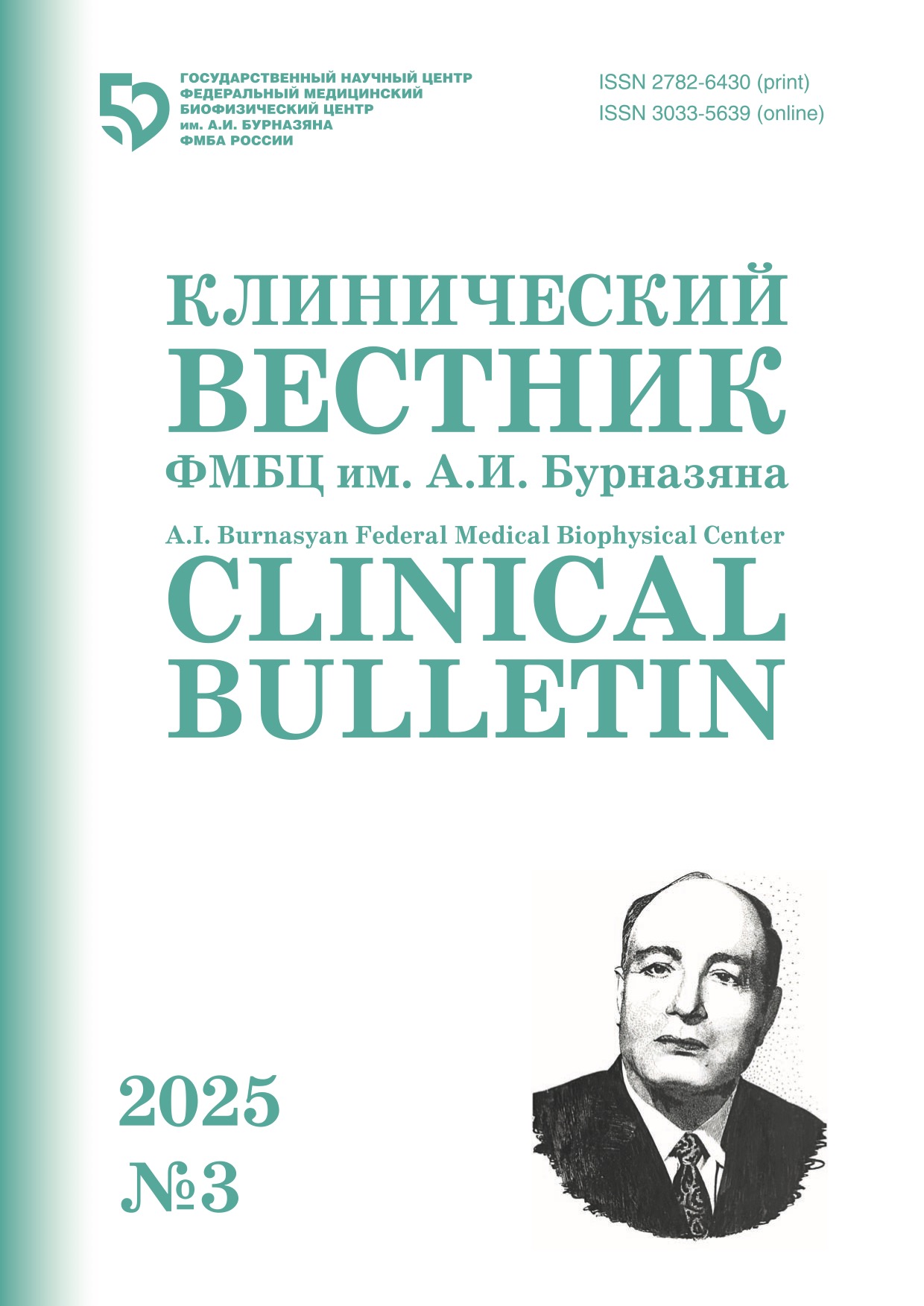A.I. Burnasyan FMBC clinical bulletin. 2025 № 1
D.V. Oreshkov1,2
Investigation of Heart Rate Variability and Prediction of Success in Youth Ice Hockey
1Department of Physical Therapy and Sports Medicine, a Federal State Budgetary Educational Institution of Higher Education «North-Western state medical University named after I. I. Mechnikov», St. Petersburg, Russia
2Public Organization “Hockey Club SKA St. Petersburg”, Russia
Contact person: Oreshkov Dmitriy Vladimirovich: oreshek1997@bk.ru
Abstract
Introduction: heart rate variability (HRV) analysis is employed in sports practice to assess current functional state, adaptation potential, early identification of maladaptation and overtraining, and to optimize the physical training process. This method is rarely used for athlete success prediction, which is highly demanded in modern sports, hence the relevance of the present study.
Objective: to explore heart rate variability indices in young hockey players and identify correlations between HRV parameters and athlete success.
Materials and methods: the study included 15 hockey players, 15 years of age, currently undergoing training. HRV was assessed using the “Omega” software and hardware complex by recording a 5-minute cardiointervalogram at rest. Statistical and spectral HRV parameters were analyzed. Athlete success was evaluated based on overall match statistics.
Results: 13 out of 15 (84.6%) athletes exhibited type III HRV regulation according to the N.I. Shlyk classification, with a predominant VLF component contributing the most to the total power (TP). Significant correlations were found between TP (0.61), VLF (0.65), and SDNN (0.53) HRV parameters and the integrated success index (points scored per game) (p<0.01).
Conclusions: heart rate variability can be utilized for predicting functional readiness and success in upcoming hockey matches in young players based on comparative assessment of TP, VLF, and SDNN parameters.
Keywords: heart rate variability, athletes, hockey, training process, success
For citation: Oreshkov DV. Investigation of Heart Rate Variability and Prediction of Success in Youth Ice Hockey. A.I. Burnasyan Federal Medical Biophysical Center Clinical Bulletin. 2025.1:25-28. (In Russian) DOI: 10.33266/2782-6430-2025-1-25-28
REFERENCES
- Gavrilova Ye.A. Using Heart Rate Variability in Assessing the Success of Sports Activities. Prakticheskaya Meditsina = Practical Medicine. 2015;3-1;88:52–58 (In Russ.).
- Galiyeva G.B. Study of the Functional State of the Cardiovascular System of Highly Qualified Athletes at Various Stages of the Training Process. Vestnik Vostochno-Kazakhstanskogo Gosudarstvennogo Tekhnicheskogo Universiteta im. D. Serikbayeva = Bulletin of the East Kazakhstan State Technical University named after D. Serikbaev. 2018;3:52-57 (In Russ.).
- Shlyk N.I. Variabel’nost’ Serdechnogo Ritma i Metody yeye Opredeleniya u Sportsmenov v Trenirovochnom Protsesse = Heart Rate Variability and Methods for its Determination in Athletes During the Training Process. Methodological Manual. Izhevsk, Udmurtskiy Universitet Publ., 2022. 81 p. (In Russ.).
- Gavrilova E.A. Variabel’nost’ Ritma Serdtsa i Sport = Heart Rate Variability and Sport. Monograph. St. Petersburg, Institut Sporta i Zdorov’a Publ., 2018.186 p. (In Russ.).
- Shlyk N.I. Serdechnyy Ritm i Tip Regulyatsii u Detey, Podrostkov i Sportsmenov = Heart Rhythm and Type of Regulation in Children, Adolescents and Athletes: Monograph. Izhevsk, Udmurtskiy Universitet Publ., 2009, 259 p. (In Russ.).
- Banayan A.A. Psikhofizicheskiye Faktory Uspeshnosti Sportivnoy Deyatel’nosti Paralimpiytsev Vysokoy Kvalifikatsii (na Primere Khokkeya – Sledzh) = Psychophysical Factors of Success in Sports Activities of Highly Qualified Paralympians (Using Sledge Hockey as an Example). Extended Abstract of Candidate’s Thesis (Psychol.). St. Petersburg, Sankt-Peterburgskiy Nauchno-Issledovatel’skiy Institut Fizicheskoy Kul’tury Publ., 2020. P. 15-17 (In Russ.).
- Kamandulis S., Juodsnukis A., et al. Daily Resting HeartRateVariability in Adolescent Swimmers during 11 Weeks of Training. Int J Environ Res Public Health. 2020;17;6:2097.
- Bryntseva Ye.V. Forecasting the Success of Junior Swimmers Based on Assessing Heart Rate Variability. Prikladnaya Sportivnaya Nauka = Applied Sports Science. 2020;2:61-68 (In Russ.).
Conflict of interest. The authors declare no conflict of interest.
Financing. The study had no sponsorship.
Contribution. Article was prepared with equal participation of the authors.
Article received: 10.10.2024. Accepted for publication: 15.11.2024


